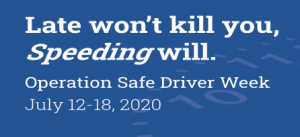Insurance premiums and renewal rates continue to be one of the biggest expenses incurred by trucking companies. Rates have increased exponentially in recent years due to accident frequency, truck driver shortage, and the ever-present threat of nuclear verdicts. But, we are here to help. We set out to learn about the underwriting process including:
- – Assessing a Trucking Company
- – Premium Increases
- – Technology Factors
- – COVID-19 Impact
- – Safety Culture Influence
Download your free eBook from Infinit-I: Avoiding Nuclear Verdicts
 |
|
Infinit-I Workforce Solutions presents:
55 Things We Learned from an Expert Commercial Auto Insurance Underwriter.
Underwriting Process
- Fleet managers and front-line operations are the ones who must maintain the safety culture with the drivers. If they are not ‘singing the safety tune,’ no one is.
- Operations MUST believe in safety culture and live it every day. It is a continuation of the top-down culture that insurance underwriters take into consideration.
- Underwriters will not convince you that safety culture is important. You should already be living it.
“Safety is doing the right thing for a long time.” – Tony Hoff, Napa Valley Insurance
Industry-Wide Premium Increases
- 15-20% Increase in premiums across the industry without a horrendous loss. If you have incurred large losses, you can expect more.
- Underwriters consider 5 years of data history.
- Excess limits are more costly and difficult to fill. They are not priced to have a loss every single year.
- Results in commercial insurance carriers leaving the market because they can no longer afford to write commercial auto coverage.
- Capacity is on a steady decrease as insurance carriers leave the market. When you lose money from a loss standpoint, you don’t want to underwrite anymore.
COVID-19 Effects on Insurance
- In the beginning, COVID-19 slowed everything down in the commercial auto insurance market.
- Initial reduction in claims due to:
- Less congestion on roads
- Increased productivity
- Fewer losses
- Decreased accident frequency
- The trucking industry rebound has led to more claims due to the resurgence of traffic, congestion, and sudden backups.
- Speeding is OUT OF CONTROL!!! Unsafe Basic scores are rising across the board.
- “Accident rates are increasing at an unprecedented level. We need to slow these drivers down.”
Premium Increase Factors
- Everything is more expensive. (Claims frequency and amount, medical coverage, defense attorney fees.)
- Insurance companies are seeing losses where their vehicle never touched the insured truck but are still paying out.
- Plaintiffs are getting better at what they are doing. Ten years ago, they did not even know what a CSA score was. Not they could teach you about CSA.
- There is a lot of uncertainty in trying cases. Settling may be cheaper than going to court (fees/attorneys) even if you were clearly not liable.
- Loss development – the longer the claim is pending, the more it costs.
“A 300% increase in 6 years is dramatic. It is unsustainable. Something has to give. Who is it going to be?”
What You Can Control
- Know the process – know what steps of underwriting consist of.
- Underwriters who have time to thoroughly vet the submission feel more comfortable writing.
- Strongly suggest you shop early. Get ready at least 3 months before renewal. Have your documents ready.
- If you are going to shop with more than one broker/carrier, have a standard submission-ready.
- Know where you stand. Is my expectation to get a decrease? Or do I want to manage my increase?
- (Loss Ratio + Incurred Total Loss) / Your Premium. If you are over 65%, your insurance carrier is losing money.
Safety Culture
- Online continual training is key in proving your commitment to safety.
- Look at your drivers’ attitude. Do they accept responsibility? Are they willing to learn?
- It is absolutely crucial to have a remedial training program. Find drivers’ weaknesses and coach them.
- Insurers look at loss development, are you trending in the right direction. If you have a stellar loss history, a new loss may not significantly affect your premiums.
- Find the carrier that you enjoy doing business with and then figure out the pricing.
- Put some faith behind your trusted safety program. Invest in yourself.
- Let Underwriters know what makes you “Best in Class.”
- Be prepared for renewal, provide a packet with the following documents:
- Financial documents and review
- Loss History
- Insurance History
- Profile of Operations
- CSA Roadside Results
- Reportable Accidents not on Loss Run
- Onsite Loss Control Survey
Be a Real Partner
- Solidify a business relationship with your Insurance Partner.
- You can get a quote from anywhere, be engaged.
Technology
- Track everything. You can’t know where you are trending unless you can track it:
- Turnover, Retention, Ops Performance, CSA Scores, Driver Safety Performance, Loss Trends, Accident Costs, Recordable Accident Rates, Total Accident Rates, Insurance Costs
- Benchmark yourself and maintain accountability.
- Find out what metrics are causing your losses and attack those.
- Use front end data to make back end decisions.
“Safety Professionals who make future decisions based on past results and analysis are the most effective. BE PROACTIVE.”
- “Every lawsuit involves being able to produce documents quickly. “Have you trained your drivers? Can you provide the documentation that you’ve trained your drivers?” Camera/online training combination can take a nuclear verdict and knock it out of the courtroom.” – Mark Rhea
- The greatest myth in trucking is that safety is too expensive. The advanced technologies that are now in place are a game changer in the industry. Technology is embraced by insurance companies because it gives us a claims “edge” that we otherwise would not have.
- Onboard cameras and collision mitigation are proven to influence courtroom decisions. BUT it only makes sense if you are willing to act on the data. You will need to have policies in place before you utilize these technologies.
Addition Tips from the Underwriter
- We will look at how many times you have switched insurance carriers in the past.
- If you have favorable loss history that extends beyond 5 years, and then have a bad year, it will come up at renewal. You need a relationship history with your insurer.
- Be 100% honest about what kind of carrier you are and what makes you the best.
- Bring to renewal: What do we do best? What do we need to do better?
- Have Best Practices in place, not the easy out. (PSP, Long-form physicals, etc.)
- Invest money in the onboarding process. Invest in your training.
- 10% of drivers cause 90% of your problems. Get them in and coach them before we lose them.
- Reporting the issue is huge! We track day loss happened vs. when it was reported to us.
- 3 things that will result in plaintiff verdict:
- Leaving the scene of an accident.
- Failure to report an accident.
- Positive drug test after accident.
Insurance Take-Aways
- 2021 will continue to be a very challenging year from an insurance standpoint.
- Losses are up and so is speed. Slow your drivers down.
- We are living in different times and we need to adjust.
- What makes you an exceptional risk? Can we fix those areas that are not exceptional?
“Safety Culture = Commitment. If everyone in your organization stays committed, you WILL succeed.”
Get Your Insurance Questions Answered!
MCIEF Founder Tommy Ruke is Ready to Answer Your Most Pressing Insurance Questions. |
| Learn Real Solutions to Your Insurance Problems. |
Infinit-I Workforce Solutions has partnered with the Motor Carrier Insurance Education Foundation (MCIEF.org) to help you get your insurance questions answered. Infinit-I and MCIEF have joined together to provide access to “Ask Tommy”.
This is a service provided to MCIEF members, but it is being opened up to Infinit-I visitors to give you the opportunity to ask your most pressing insurance questions. To submit your questions, click here.



 work at their own pace while online, they get to spend more time with their family. This means, when your drivers do show up for their truck assignment, they aren’t worn out by several days of repetitive workshops or classes. They are fresh; ready to hit the road and make some money.
work at their own pace while online, they get to spend more time with their family. This means, when your drivers do show up for their truck assignment, they aren’t worn out by several days of repetitive workshops or classes. They are fresh; ready to hit the road and make some money. Our safety program has proven to decrease our client turnover by up to 53%. That means is possible for Infinit-I Workforce Solutions to take you from 100% turnover to just 47%. A reduction in turnover like that would save you over half a million dollars per year in onboarding costs. Incredible!
Our safety program has proven to decrease our client turnover by up to 53%. That means is possible for Infinit-I Workforce Solutions to take you from 100% turnover to just 47%. A reduction in turnover like that would save you over half a million dollars per year in onboarding costs. Incredible!



 They experienced numerous infrastructural challenges along the way. The convoy damaged bridges, became stuck off-road, and damaged equipment as a result of roadway conditions. The trip across the country took two months.
They experienced numerous infrastructural challenges along the way. The convoy damaged bridges, became stuck off-road, and damaged equipment as a result of roadway conditions. The trip across the country took two months.








































